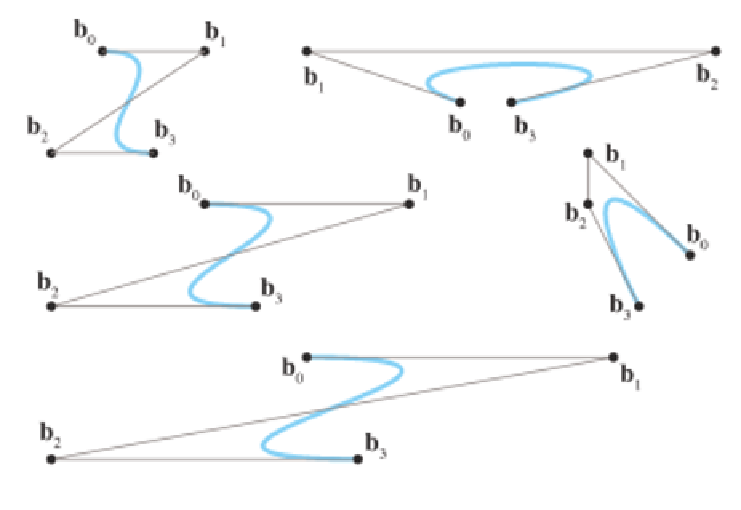Game Development Reference
In-Depth Information
Figure 13.10
Some cubic B ezier curves
Bezier curves and reveals the relationship to Hermite form.
We've seen some beautiful cooperation between math and geometry in
this topic, but the convergence is particularly elegant for Bezier curves. It
seems as if almost every important property of Bezier curves was indepen-
dently discovered multiple times by researchers in different fields. Rogers'
book [58] includes an interesting look at this story.
13.4.1 The de Casteljau Algorithm
The de Casteljau algorithm defines a method for constructing Bezier curves
through repeated linear interpolation. It was created in 1959 by physicist
and mathematician Paul de Casteljau (1910-1999).
13
We show how the
algorithm works for the important cubic case as our example. First, a bit
of notation is necessary. A cubic curve is defined by four control points,
b
0
...
b
3
. Notice that Bezier control points traditionally are indexed start-
12
“Rate of exchange,” if you will pardon the pun.
13
Yep, he's French, too, and that means you'd better pronounce his name correctly:
“duh CAS-tul-jho.” He worked for Renault's rival, Citroen.









Search WWH ::

Custom Search